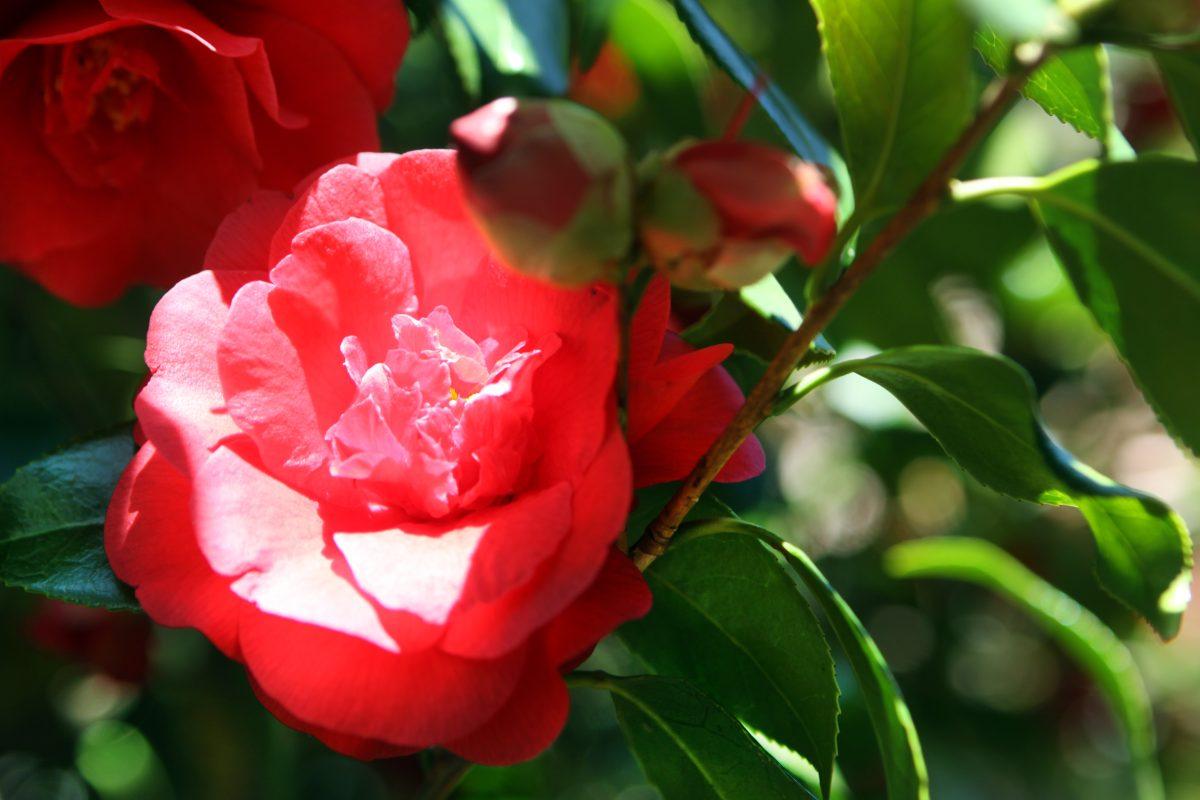“April showers bring May flowers,” or so the rhyme goes. But the unsung heroes of floral diversity have little to do with precipitation and much more to do with pollination. The flora around campus is beginning to show itself as winter finally moves aside and makes way for spring.
The biggest factor, according to John Dole, head of the Department of Horticulture Science, is flowers’ pollination strategies, especially with pertinence to the animals that spread their pollen.
Showy flowers tend to attract beetles, bees, moths and butterflies to pollinate them, as elaborate petal structure and large size lure the creatures to their nectar.
“Bee-pollinated [flowers] tend to be a lot more sophisticated in the sense that they have specific mechanisms that direct the bee in a certain way,” said Dole, who teaches a graduate physiology of flowers course.
Snapdragons, for instance, have petals that form a tunnel so the bee can only go into the flower one way and has to pollinate it.
Bees see differently than humans and can detect patterns, lines or dots in the flowers which act like runways, according to Dole.
“If you were a carrier jet and you saw these [patterns] on the ground, it would tell you where to land,” Dole said. “For bees, it’s the same way. [The patterns] sort of say, ‘Land here, walk here, you get the prize! And, oh, by the way, we’re going to use you.’”
In the case of passionflowers, the bee walks onto the flower for nectar, where the stigma wipes pollen from the bee’s back. The nectar, Dole said, is deep enough that the bee must go all the way in; so on its way out the “male part” of the flower leaves it with more pollen to spread to other flowers.
Plant breeders will emphasize these specific mechanisms so as to draw more bees and to make the flowers prettier to humans.
Dole gave the example of a pansy where a breeder bred one with a faint line pattern to having distinct lines on a whole family of the plant.
Though bee-pollinated flowers tend to be the showiest, they are not all elaborate.
For example, the goldenrod, according to Dole, is a fairly simple bee-pollinated flower.
Many people, according to Dole, think the goldenrod causes hay fever, but that is not the case, as only wind-pollinated flowers that carry pollen in the air can do so.
Beetle-pollinated flowers tend to be very large, Dole said, citing the southern magnolia.
“Beetles are not terribly sophisticated pollinators,” Dole said. “They tend to bumble around the flower, so those flowers are not particularly delicate. They’re like the Thunderdome from Max and the Thunderdome.”
Moth-pollinated flowers tend to be large and white, typically blooming for the evening and closing by morning, such as the appropriately named moonflower.
Butterfly-pollinated flowers are much like bee-pollinated, according to Dole, except in their tendency to have a lot of small flowers in one place, such as zinnias.
The longer a butterfly stays on the flower the more likely it will get pollen on itself to spread to other flowers.
“It’s like bars,” Dole said. “You know the salty pretzels are there to get you to order more drinks.”
The nectar in butterfly-pollinated flowers is the figurative pretzels, according to Dole.
Flowers, such as lilies and magnolias, also partake in something called “outcrossing,” where their genitalia grow apart from one another so as to avoid pollinating themselves.
“Flowers have many specific pollination mechanisms,” Dole said. “It’s all very cool and very pretty.”








